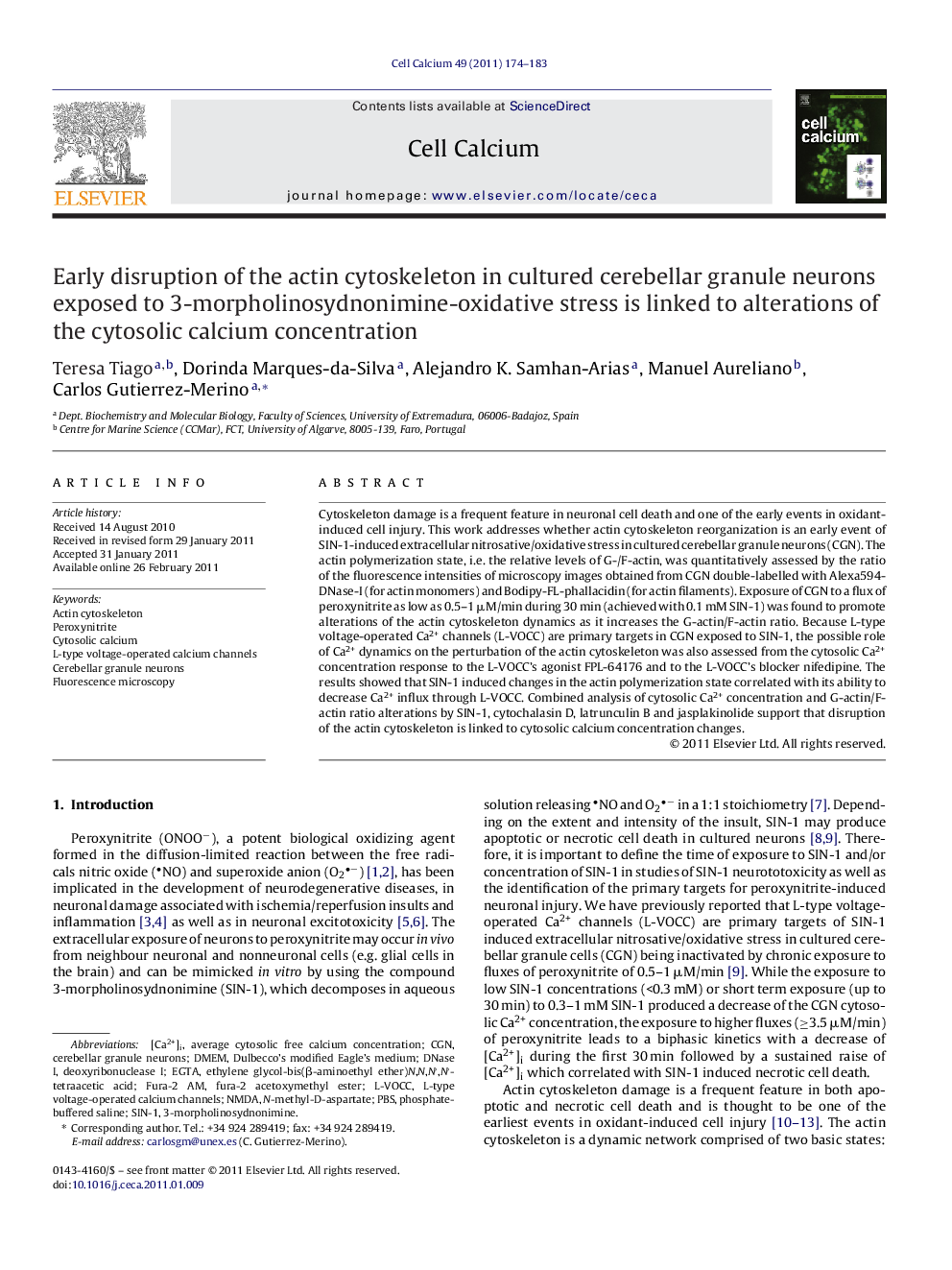| Article ID | Journal | Published Year | Pages | File Type |
|---|---|---|---|---|
| 2166194 | Cell Calcium | 2011 | 10 Pages |
Cytoskeleton damage is a frequent feature in neuronal cell death and one of the early events in oxidant-induced cell injury. This work addresses whether actin cytoskeleton reorganization is an early event of SIN-1-induced extracellular nitrosative/oxidative stress in cultured cerebellar granule neurons (CGN). The actin polymerization state, i.e. the relative levels of G-/F-actin, was quantitatively assessed by the ratio of the fluorescence intensities of microscopy images obtained from CGN double-labelled with Alexa594-DNase-I (for actin monomers) and Bodipy-FL-phallacidin (for actin filaments). Exposure of CGN to a flux of peroxynitrite as low as 0.5–1 μM/min during 30 min (achieved with 0.1 mM SIN-1) was found to promote alterations of the actin cytoskeleton dynamics as it increases the G-actin/F-actin ratio. Because L-type voltage-operated Ca2+ channels (L-VOCC) are primary targets in CGN exposed to SIN-1, the possible role of Ca2+ dynamics on the perturbation of the actin cytoskeleton was also assessed from the cytosolic Ca2+ concentration response to the L-VOCC's agonist FPL-64176 and to the L-VOCC's blocker nifedipine. The results showed that SIN-1 induced changes in the actin polymerization state correlated with its ability to decrease Ca2+ influx through L-VOCC. Combined analysis of cytosolic Ca2+ concentration and G-actin/F-actin ratio alterations by SIN-1, cytochalasin D, latrunculin B and jasplakinolide support that disruption of the actin cytoskeleton is linked to cytosolic calcium concentration changes.
